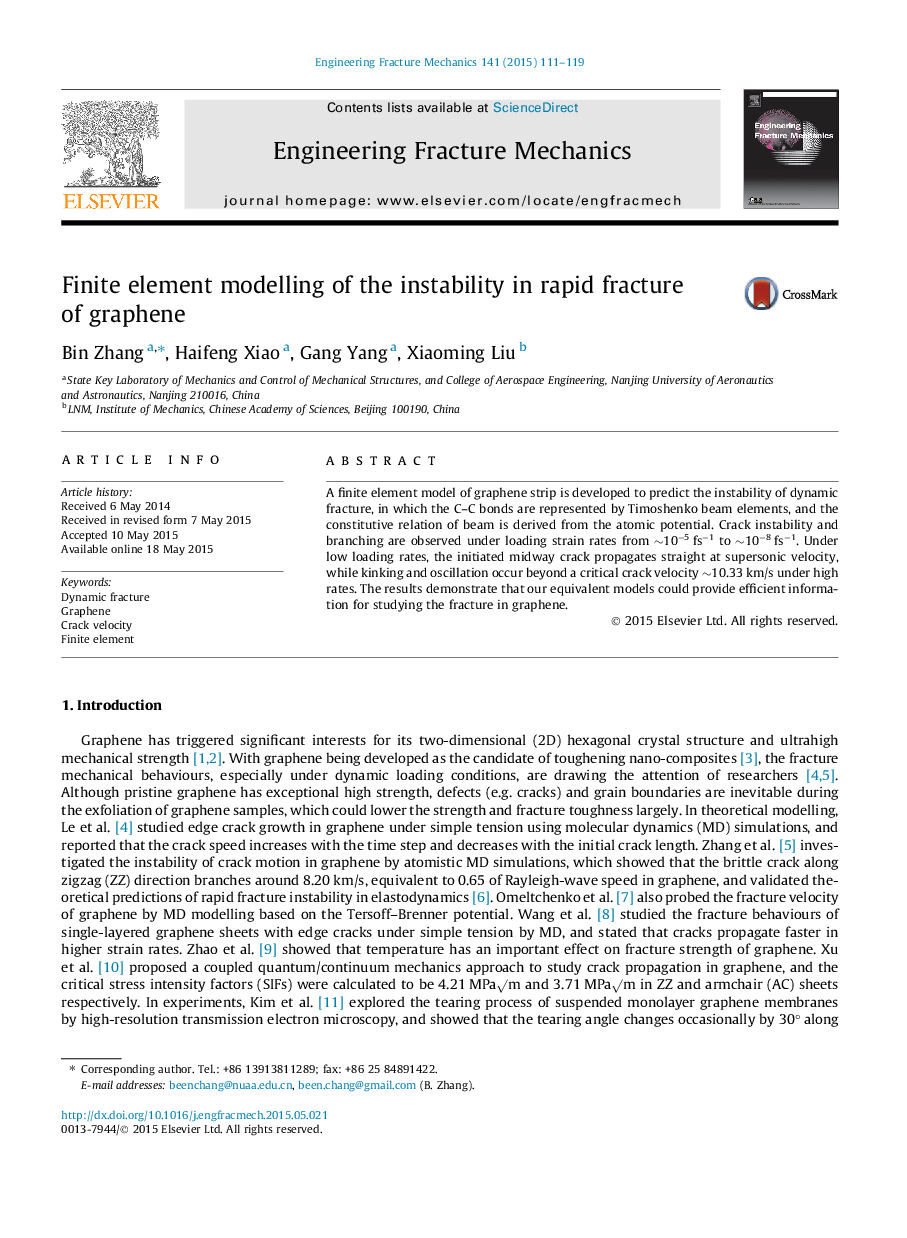| Article ID | Journal | Published Year | Pages | File Type |
|---|---|---|---|---|
| 770548 | Engineering Fracture Mechanics | 2015 | 9 Pages |
•A finite element model is developed for cracked graphene.•The C–C bonds are represented by Timoshenko beam elements.•The initiated crack propagates straight at supersonic velocity.•Crack kinking occurs beyond a critical speed ∼10.33 km/s.
A finite element model of graphene strip is developed to predict the instability of dynamic fracture, in which the C–C bonds are represented by Timoshenko beam elements, and the constitutive relation of beam is derived from the atomic potential. Crack instability and branching are observed under loading strain rates from ∼10−5 fs−1 to ∼10−8 fs−1. Under low loading rates, the initiated midway crack propagates straight at supersonic velocity, while kinking and oscillation occur beyond a critical crack velocity ∼10.33 km/s under high rates. The results demonstrate that our equivalent models could provide efficient information for studying the fracture in graphene.
